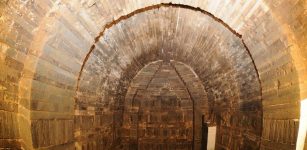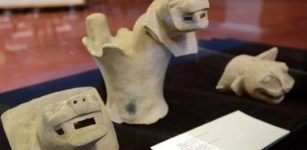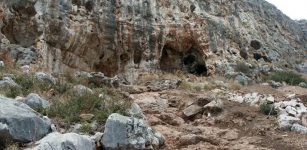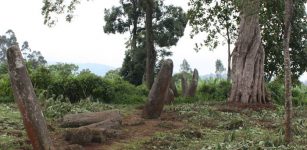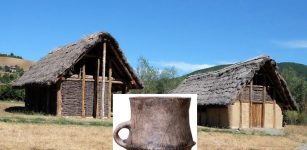11th-Century Pratihara-Era Temple Accidentally Found By A Farmer In Uttar Pradesh, India
Conny Waters – MessageToEagle.com – The discovery of the temple and a number of relics took place in Nauni village of Jagner block, 70 km from Agra city, in the Indian state of Uttar Pradesh.
An 11th-century Pratihara-era temple was accidentally discovered by a farmer who was preparing a fish pond in his field.
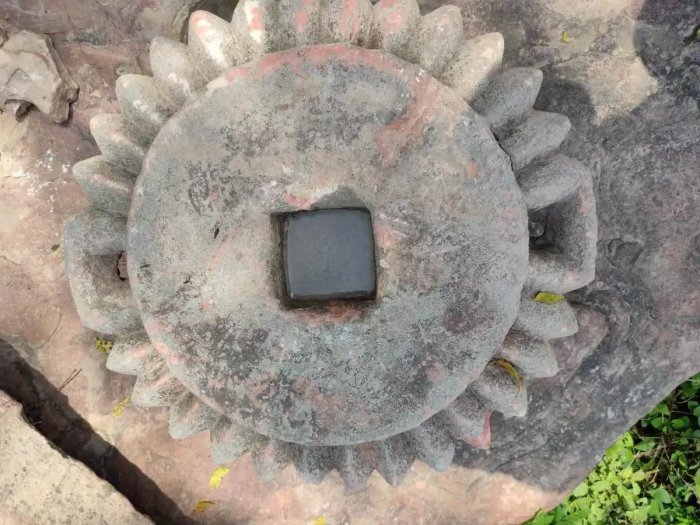
source: ASI via The Times of India
Archaeological Survey of India (ASI) will be investigating the area of discovery.
“We will send our team to Jagner to examine the relics and explore the site on Friday. However, at first glance, the shared pictures of the discovered stones suggest that it’s part of Hindu temple probably belonging to the 11th century,” professor Sugam Anand, head of the department of history and culture, Agra University, told The Times of India.
According to Prabhu N Singh, ASI’s assistant superintendent for the Agra region, at first sight, “it is a set of two amalakas made of sandstone. There is one lamp post as well, which is generally found at the entrance of a temple.”
An ‘amalaka’ is a segmented or notched stone disk, usually with ridges on the rim that is placed on the top of a Hindu temple’s shikhara or main tower.
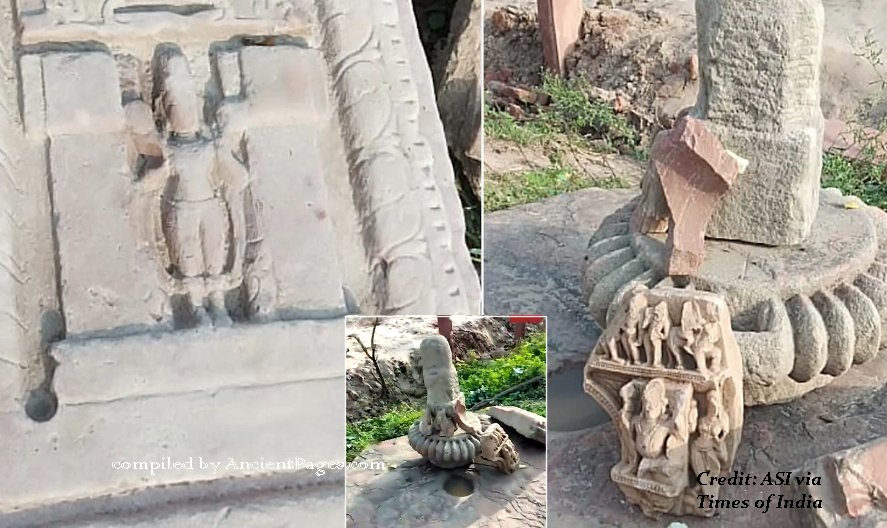
Amalaka among the relics of Pratihara-era temple. Credits: ASI via The Times of India
Amalakas appear to have been common during the Gupta period (c. 320 and 550 CE) characterized by advances in prose, poetry, and drama, and the large quantity and sophisticated quality of the art. The amalakas were used in the Nagara and Kalinga styles in India’s architecture, but not in the Dravidian architecture of South India.
To some, the amalaka is the representation of a lotus, and therefore, it symbolizes a seat for the deity below.
“This would be the first discovery of a Pratihara-era temple structure across the Chambal River near Aravalli hill. Jagner is an area rich in sandstones and a water body near the discovery of the relics hints at the possibility of a large temple complex beneath the soil,” said Professor Manvendra Kumar Pundhir, director of the archaeological section at Aligarh Muslim University’s Centre of Advanced Study in History.
He also added that a deeper study of the artifacts unearthed at the site will shed more light on the construction techniques of the ancient builders, especially whether the temple has mortise and tenon joints or not.
In the Gupta period, “the temples had a single room or garbha, but during the Pratihara era, it had extended to five rooms, including garbhagriha, mandap, bhog, like the Lord Ram temple in Ayodhya. We have abundant evidence of Pratihara temples in Madhya Pradesh’s Morena, Datia, and Bhind, but this would be the first temple of the era here.”
The Pratiharas ruled much of Northern India from the mid-8th to the 11th century and were famous for their sculptures, carved panels, and open pavilion-style temples.
Written by Conny Waters – MessageToEagle.com AncientPages.com Staff Writer


